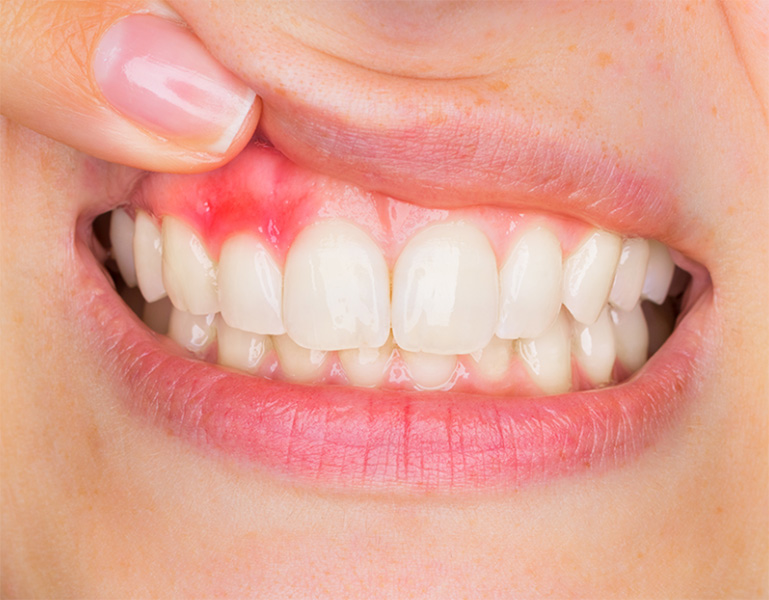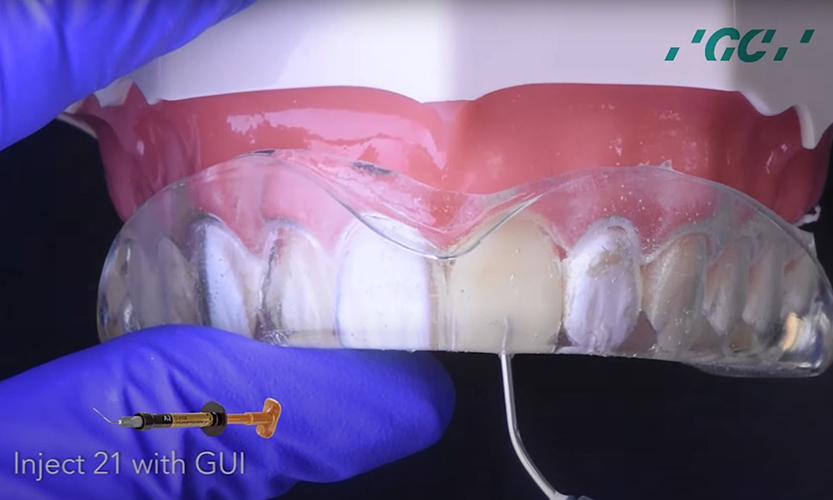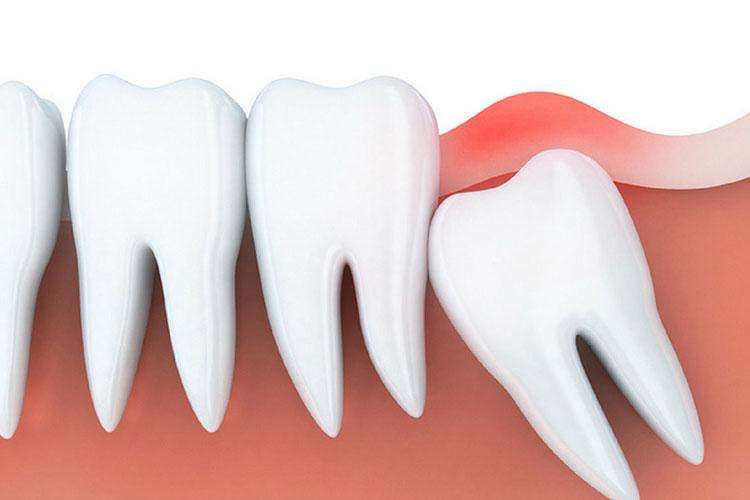At St. Lawrence Dentistry, nestled in the picturesque historic district of Port Credit, Mississauga, battling gingivitis is not just a practice but a passion!
Gingivitis, that pesky inflammation of your gum tissue, is a crafty little bugger caused by bacteria and can show up at any age. Teenagers, watch out – you’re on its radar!

The telltale signs of this gum invader? Your gums go on a color spree, turning red, swells, and loses its neat, stippled texture (imagine tiny hills and valleys on a micro-scale). You might even notice your gums getting a bit too cozy between your teeth, and if brushing makes it rain pink in the sink – that’s gingivitis saying hello!
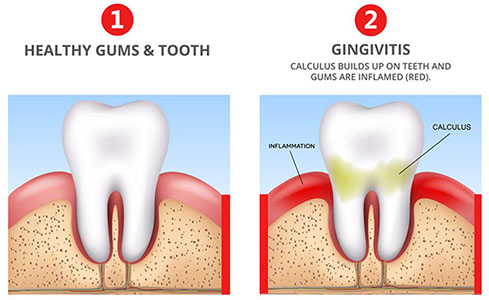
Gingivitis isn’t picky about who it visits – it doesn’t care about your gender or background. It’s all about where it settles, how long it decides to crash at your place, what caused it, and how severe it plans to be. At St. Lawrence, our dental hygienists are like gingivitis detectives, regularly removing plaque – gingivitis partner in crime – with gusto.
Did you know breathing through your mouth can lead to gingivitis? Chronic mouth breathing is like a party invitation for this gum problem. It brings friends like nasal obstruction, a Sahara-like dryness, and a morning sore throat. If you’re a mouth breather, give us a heads-up at St. Lawrence. We can nurse your gums back to health, but remember, clear nasal airways are the real MVP here.
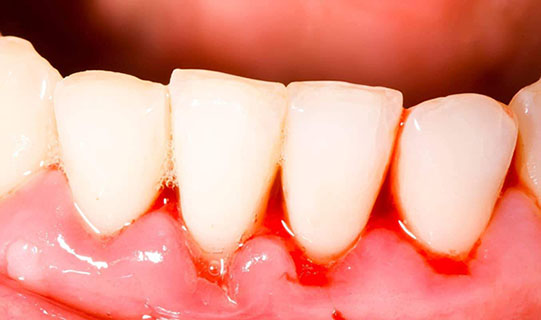
Then there’s the dramatic cousin in the gingivitis family – Acute Necrotizing Ulcerative Gingivitis (ANUG), or as it’s dramatically known, “Trench Mouth”. Picture this: World War I soldiers, stressed and living rough, getting hit with fever, swollen lymph nodes, mouth pain, and a distinct body odor. It’s rare at our Mississauga office, but we’re ready with gum irrigation, stress relief, and sometimes antibiotics to send ANUG packing.
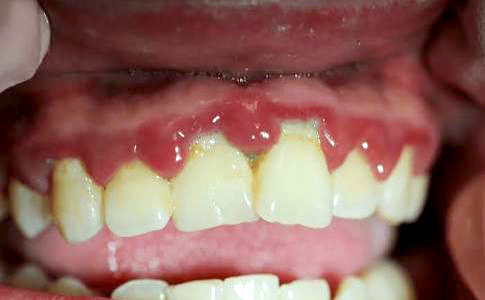
Actinomycotic Gingivitis is the rare rebel of the bunch. It laughs in the face of regular treatments, causing redness and burning pain. A biopsy reveals its true nature – a fungal fiesta! The solution? Anti-fungal meds to crash the party.
Ladies, have you ever heard of Pregnancy Gingivitis? It’s like your gums throwing a baby shower – they swell, turn red, and get tender. Blame those party-animal hormones, estrogen, and progesterone. The good news is that it’s usually just a temporary gig and responds well to good old brushing and flossing.
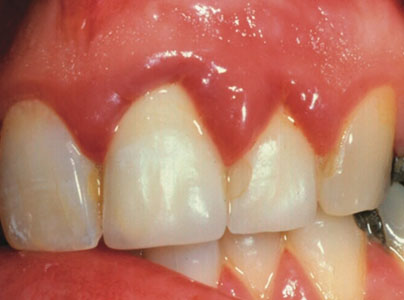
Lastly, there’s Diabetic Gingivitis, a frequent visitor at St. Lawrence. Diabetes brings along high sugar levels, great thirst, and a fan club of dental complications like dry mouth and a burning tongue. Meticulous homecare and blood sugar level management are crucial to giving it the boot.
So there you have it – the lowdown on gingivitis from the experts at St. Lawrence Dentistry. Are you curious to learn more or ready to show gingivitis the door? Give us a call, and let’s chat about gum health!
- Sleep Dentistry: Enhancing Comfort and Care During Dental Procedures - July 11, 2024
- The Revolutionary Injection Molding Technique for Composite Veneers - June 27, 2024
- Why Are Third Molars Called “Wisdom Teeth”? - June 19, 2024



